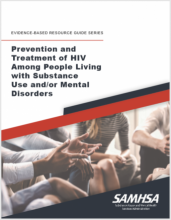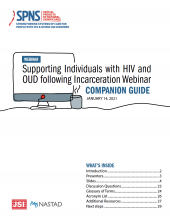
In response to an increased risk of overdose, several communities in the U.S. are considering establishing spaces for people to use substances safely.



In response to an increased risk of overdose, several communities in the U.S. are considering establishing spaces for people to use substances safely.
The COVID-19 pandemic resulted in federal policy changes related to telehealth use that allowed states to maximize access to medications for opioid use disorder (MOUD) through telehealth.
The growing opioid crisis across the United States has resulted in an increase in new HIV diagnoses.
Individuals who have HIV who also use drugs experience increased age-matched morbidity and mortality in comparison with those with HIV who do not use drugs.
This newly released national strategy confronts the rising rates of opioid and non-opioid related fatal overdoses.
This document describes the critical role that peers have in developing and delivering care for people with HIV and OUD and how a state’s Medicaid program can serve as an essential fiscal resource in supporting peer services.
This tool aims to assist HIV primary care teams that work in a range of clinical settings to develop and provide enhanced integration of behavioral health (BH) services.
This discussion guide is intended to elicit a comprehensive and concrete conversation about language, stigma, and discrimination as a means of strengthening care systems and ensuring that people who seek care for HIV and/or substance use disorders, including opioid use disorder, are treated with
This month’s Connecting Care episode continues the conversation about barriers to methadone treatment for patients, stigma, and what we can learn from other countries to advance policy and practice for methadone in the US.
This ready-to-use training package is designed to provide HIV providers (including physicians, dentists, nurses, therapists, social workers, counselors, specialists, and case managers) with an overview of the challenges and strategies for change in working with